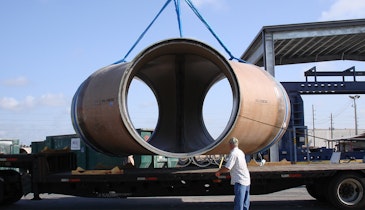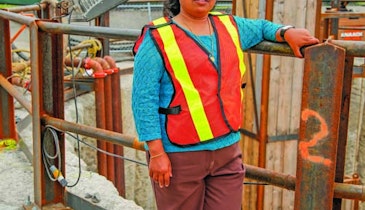The village of Lombard, Illinois, was evaluating the maintenance and operational costs of its Cambria Lift Station, which was experiencing service issues due to poor operation of the check valves and inefficient pumps.
Installed in 1989, the steel-can lift station had exceeded its service life. During heavy rain events, the wet well would become filled with solids due to excess inflow and infiltration which were eventually pumped back to the lift station. Public works staff estimated its maintenance at a yearly cost of $30,000 to $40,000. Rehabilitating the facility was the obvious solution for a reliable sewer collections system.
FACILITY REHABILITATION
Phase 2 of the Cambria Lift Station rehabilitation was performed under two contracts with Christopher B. Burke Engineering of Rosemont as the design consultant.
The first contract addressed a manhole modification, sewer televising and the installation of a permanent bypass line. The second contract consisted of the replacement of pumps, piping, control panel, flowmeter and air vacuum manholes, along with rehabilitation of the existing steel wet well and site restoration.
Only technologies that allowed minimal reduction of the inner diameter of the wet well were considered in order to allow sufficient maintenance and operational space for the three new pumps; therefore, coatings and spray-on linings were initially specified.
A LONG-TERM SOLUTION
The Lombard project manager began to research other potential rehabilitation technologies. Hobas CCFRPM pipe soon presented itself as an alternate option that would provide a long-term corrosion-free solution well within budget.
“The village sought an alternate coating/lining process that would eliminate the need for cathodic protection and thus reduce maintenance costs,” says Ray Schwab, Civil Engineer II, the engineering project manager for Lombard. “Through research related to linings/liners that stood up to H2SO4, CCFRPM came up as a potential fit. By using the Hobas liner, public works would have two benefits: The elimination of cathodic protection and a long-term service life structural liner,”
Due to its prevalent use to rehab sewers, Hobas was added as an alternate per an addendum. John Neri Construction of Addison was the low bidder, utilizing the Hobas option. Construction began in April of 2019 and was completed in June of the same year.
“The rehabilitation of the Cambria Lift Station was the first time JNC has worked with Hobas as well as its fiberglass liner product,” says Nicholas Neri, assistant manager/estimator, John Neri Construction. “The depth of the lift station required 33 feet of 110-inch I.D. pipe to be inserted into the existing 120-inch I.D. steel wet well. Being that the outside diameter of the Hobas pipe was 114 inches, it was a very tight installation.
“Once installed, JNC was able to core the Hobas pipe to accept the influent and effluent piping,” he says. “We were very pleased with the integrity and quality of the Hobas material, as its assembly and installation couldn’t have gone more smoothly.”
Since 2010, Hobas has provided pipe material for the rehabilitation of wet wells. Rehabilitation of these wet wells via sliplining is suitable due to lower labor cost, longer life than linings and the elimination of cathodic protection.
HOBAS Pipe USA pipe is suitable for virtually every installation method of new construction and rehab. The centrifugally cast, fiber-reinforced, polymer mortar pipe is inherently corrosion resistant. Key applications are sanitary and storm sewers, other corrosive environments and potable water. Pressure and gravity pipe diameters range from 18 to 126 inches.
800-856-7473 | www.hobaspipe.com | info@hobaspipe.com





